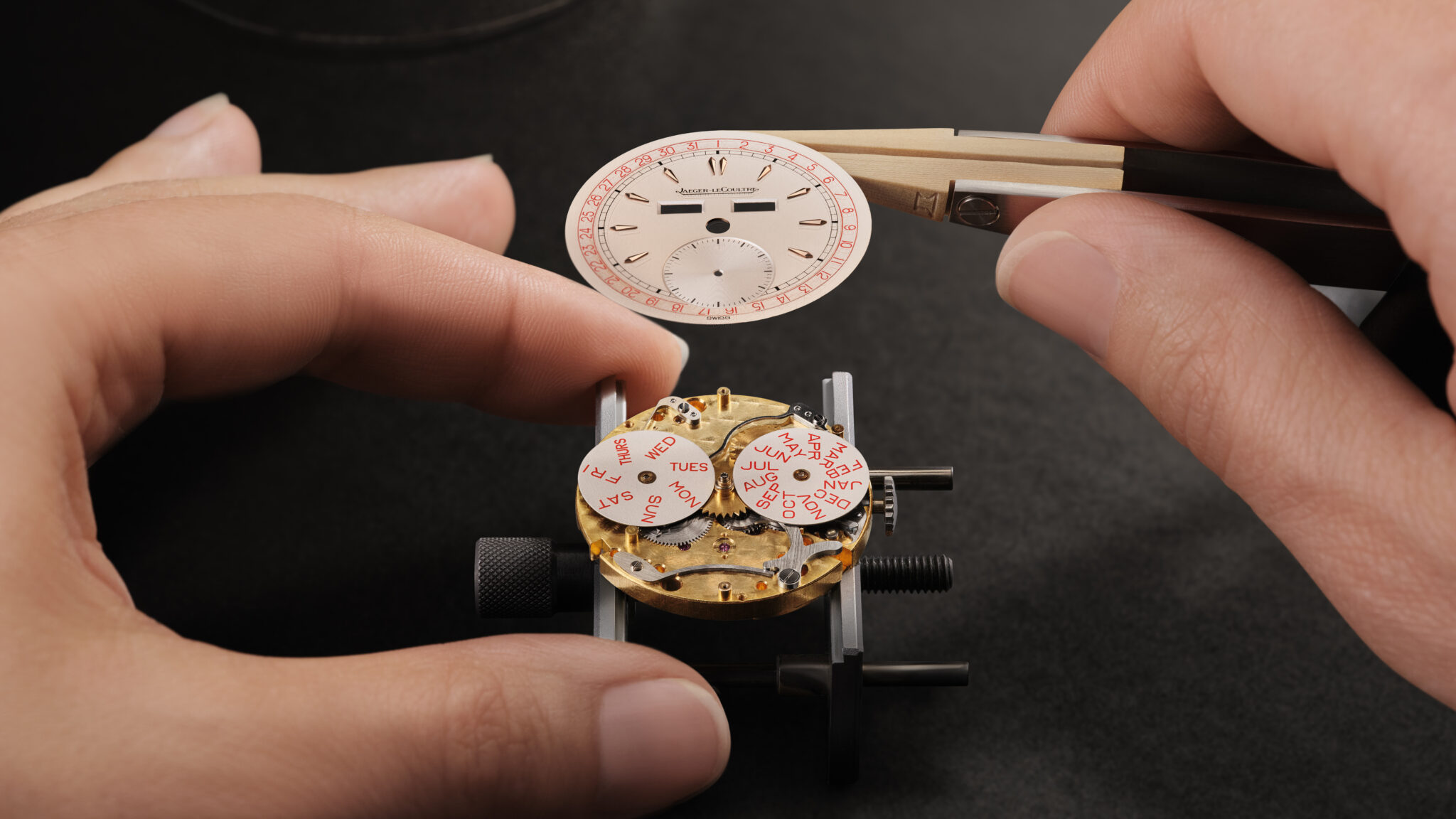Jaeger-LeCoultre is opening the doors to its Vallée de Joux manufacture with a video tour showing the 180 crafts it uses to make its watches.
The series of short films each focus on a single skill, and get up close with watchmakers, and hear directly from them about their processes, in a way that only visitors to the workshops usually get to experience.
The series, titled In the Making, is arranged into a story that shows each of the steps required: design, produce, finish and ornament, to bring a finished watches to life.
DESIGN
As well as determining the aesthetics of a watch – the shape, size, style and composition of the dial, and case – design embraces all technical considerations, ranging from the development of new complications and movements to the shape of components required to perform particular functions, the overall architecture of a movement, the technical requirements of the case that must contain a given movement, and all ergonomic considerations.
Designers sketch out ideas with pencil and paper in a process that draws on the past, present and future, and working in intense collaboration with technical designers and movement constructors; a beautiful looking design is of no use in watchmaking unless allied to engineering and technical design of the highest precision.
PRODUCE
With a deep exploration of what are often considered the more “industrial” stages of production – the skills rarely seen and little-understood by the public – In the Making reveals how the specialists who master each of these steps share the same devotion to precision and artistry, and the same passion for their craft as their colleagues in every other area of the Manufacture.
At Jaeger-LeCoultre, the production process begins with raw metal, which is cut, stamped or treated in myriad other ways, to eventually take on the forms of different components. It ends – after countless different assembly steps – with final casing up and polishing, which brings the metal to life in a magical way.
Beyond the production of new timepieces, Jaeger-LeCoultre’s in-house restoration workshop undertakes many of the same production steps to breathe new life into watches that may be 40, 60 or even 90 years old.
The restoration specialists use original spare parts when available or make identical components from scratch, using original blueprints and swages (metal-stamping templates).
FINISH
With the responsibility for bringing light and reflection to the visible part of our timepieces such as the case, bezel, lugs and crown, the polisher has the power to bring a timepiece to life in a magical way with every gesture.
In accordance with its belief that a fine watch should be beautiful not only on the outside but also in parts that are not immediately visible, Jaeger-LeCoultre attaches great importance to the fine finishing and hand decoration of watch movements.
High complication watches require particular expertise, in keeping with their rarity and value. These finishing techniques range from the traditional, such as perlage, Côtes de Genève, blueing of screws, chamfering and skeletonisation, to modern finishes, such as micro-blasting.
Enhancing the beauty of components by making the edges shine and creating a play of luminous reflections, bevelling (or anglage) is a meticulous decorative technique that involves multiple skills, from hand-cutting internal angles to multiple variations of hand-polishing with a variety of metal and wooden tools.
Finishing requires impeccable mastery of every skill and gesture in order to achieve consistent angles and reflections.
ORNAMENT
Bringing together centuries-old decorative crafts such as guillochage, engraving, gem-setting and a variety of different enamelling techniques, Jaeger-LeCoultre is one of the very few watchmaking Manufactures to have a dedicated Rare Handcrafts (Métiers Rares) atelier under its own roof.
Complex and meticulous, grand feu enamel is a cross between illustration and chemistry – as much alchemy as art; engravers use a variety of techniques and different gestures to fashion subtle plays of light and shadows on metal surfaces to produce an almost endless variety of patterns; the gem-setter’s task is to secure precious stones to metal in a way that flatters the beauty of the gem, and watches bring the additional challenge of having already been decorated with other crafts, requiring extreme precision and delicacy on the gem-setter’s part.
By working side-by-side in a dedicated atelier, these specialized artisans are better able exchange ideas and share their creative energy, while maintaining and perpetuating ancestral know-how within the Manufacture.

